GUBAT
LET OUR CULTURE BE RECOGNIZED
BURN THE CROWDS
THE RISE OF GUBAT NATIONAL HIGH SCHOOL'S BLAZING WARRIOR
PATIKIM-TIKIM
TASTE THE PROUD DELICACY OF THE GUBATNONS
WEAVE
GUBAT WEAVERS THE TRUE ARTISANS OF GUBAT

N A Y
• R O R A
SHESELLSSEASHELLSBYTHE SEASHORE
06 13
CONTENTS
TOURISTSPOTS
DestinationsinGubatSorsogon

THE WORKS OF GUBATNONS INTERESTINGJOBSOFTHE CITIZENSOFGUBAT
UNITING LEGENDS CULTURE GUBATSORSOGONSSTREETDANCE COMPETITION
ALBULARYO

GUBATNONSFAITHHEALERSTHAT PERFORMS"SANTIGWAR"

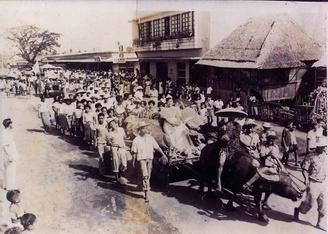
LET US BE RECOGNIZED GUBATWEAVERSTHE TRUEARTISANSOFGUBAT

TOURIST SPOTS
Agoho Forest Reserve
Visit the beach front forest reserve with huge agoho trees, located at the junction of Gubat to ariman road where you can enjoy the serenity that emanates within this place and can also have a dip at the beach while having a taste of the splendid drinks and food that they offer.

>Liyang Cave and Spring
Check out this hidden gem of Gubat, Liyang spring, infamous for its fascinating blue water. Located at barangay Nazareno Gubat, Sorsogon which was featured in Jessica Soho's KMJS that aired last May 5 2019. Being a hidden gem of the town, this destination is indeed worthy of visiting during your vacation.

>Pahayahayan Ni Papay Juaning
If salt water is not your style, then worry not, Pahayahayan is just right beside Agoho Forest Reserve where you can enjoy your swimming at the fabulous pool constructed to provide tranquility. Seize your precious moments with wonderful memories at Pahayahayan!

WORKS OF GUBATNONS
WEAVE
Gubat Century-Old Industry: The Intricacy of Salanigo Weaving

An indigenous industry woven into the bounty of the cultural heritage of Gubat is one of the testaments to the invincible creativity and talent of Gubatnons
Salanigo, a hand-woven abaca slipper found only in the town of Gubat, was ingeniously innovated by the late Josefina "Lola Pina" Epino, a legendary inovative woman of Manapao, Gubat, Sorsogon.

Lola Pina was generated by a family of weaver’s and abaca fiber strippers in Manapao,where weaving has been a family business She was born in 1939, and despite the polio that afflicted her at an early age, she possesses this marvelous talent and skill She once had her education, but due to mobility difficulties, she had stopped attending school Hence, she spent her lifetime inside their house and learned weaving with her family instead
GUBAT, Sorsogon For decades, Gubatnon weavers have dedicated themselves to making "sawali" (woven bamboo) walls, which feature a historic native weaving pattern, the town's popular item
In Bicol and Samar, salanigo has existed for centuries It has an intricate diagonal or twilled weave thanks to its "under-two-and-overtwo" design
The number of artisans has also declined Children of the current crop of weavers have opted for more sustainable sources of livelihood that require little handiwork and i mmediate income
Parapulot

In Gubat, Sorsogon's Barangay Sangat, Pili Trees (Canarium Ovatum) are more noticeable than in the rest of the municipality. Pili resin, which is sold in coconut shells, plays a significant role in Gubat's market It typically sells out because it is mostly used as fuel and medicine
101
People known as "Parapulot" gather the aforementioned resin and wrap it in coconut husk before selling it to the general public Perhaps as a result of advancements in medicine and fuel, the number of Pili resin farmers is drastically declining It might be forgotten, but it will always be a part of Gubat's vibrant heritage
Photo taken from: Agri cool ture
THE
N A Y • R O R A
SHESELLSSEASHELLSBYTHESEASHORE
Making necklaces out of shells or kaligay, which they could only obtain from Rizal Beach, also known as Sorsogon's White Beach, was how Barangay Rizal got known for its goods. The necklace or seashell
necklaces were made by the students as their project at the School which became known in the 1960's.
Nay Rora is one of the sellers of handmade chandeliers bracelets and other products made out seashells at a store near the Rizal Beach
 Shot by: Clyde Esperanzate
Shot by: Clyde Esperanzate
The inventive costumes worn by the dancers at the Ginubat Festival demonstrated how creative the Gubatnons really are


 Shot by:
Ian Photography
Shot by:
Ian Photography
Uniting Legends and Culture: Gubat Folklore Street Dancing Competition

Celebrating Gubat's History and Instilling Courage in the Community
Introduction:
In the picturesque town of Gubat, something magical happens every year on the streets of Barangays Manook and Luna Candol The Gubat Folklore Street Dancing Competition brings to life the heroic tale of Mardaoan, a story deeply rooted in the town's history and folklore. This vibrant event showcases the talent, creativity, and unity of the seven participating clusters, captivating audiences with their mesmerizing dance interpretations. By delving into the struggles faced by the people of Gubat and their triumphant battle against the fearsome Tagulipnan, the competition serves as a powerful reminder of the community's resilience and determination. Let's explore the enchanting world of Gubat Folklore and the significance it holds for the town's present and future.
AnEpicTaleTransformed:
The Gubat Folklore Street Dancing Competition breathes life into the age-old legend of Mardaoan, depicting the terrifying reign of Tagulipnan—a monstrous being with the body of a bird and the torso of a man. The tale revolves around the townspeople's relentless fight against this menacing creature, who poses a threat to their children and brings sleepless nights. Through the masterful dance performances, renowned chieftains Aramag, Maragadao, and Mararag, along with the villagers, portray the deep emotions and atmosphere of the story, immersing the audience in the unfolding drama.
ASpectacleofColorsandEmotions:
As the dancers take to the streets, the vibrant colors of their costumes—red, yellow, green, blue, purple, and pink— illuminate the atmosphere with excitement. Despite the scorching sun, the performers maintain their energy and enthusiasm, captivating the audience with their skillful movements. The climax of the tale brings the conflict to life, with fierce expressions of the Rabrab monsters, loyal companions of Tagulipnan, meeting the unyielding determination of the warriors and chieftains. Just as the villagers near their downfall, the mighty Mardaoan enters the scene, summoning his allies—the Bugiw and Malasugi, common fishes found in Gubat. With courage and valor, Mardaoan defends the land and emerges triumphant, restoring peace and harmony.
UniquenessandUnforgettablePerformances:
Each cluster participating in the competition showcases its distinctive style and interpretation of the Gubat Folklore, creating an enchanting tapestry of diversity. Some groups are admired for their meticulously crafted costumes, while others receive praise for their overall performance. The judging criteria focus on the holistic impact of each execution, recognizing the efforts put into bringing the folklore to life. Cluster 1, comprising Barangays Ariman, Luna Candol, Panganiban, Paradijon, and Pinontingan, secured third place, showcasing their talent for the second time in the top three winners. Cluster 2, composed of Barangays Balud del Sur and Norte, Cogon, Cota na Daco, and Manook, earned second place, providing stiff competition to the ultimate victors of the event, Cluster 8, which includes Bagacay, Nato, Ogao, Paco, and Patag. Cluster 8 achieved a remarkable back-to-back victory, building on their success from the previous year.
PreservingHistory,InspiringtheFuture:
Beyond the captivating performances and friendly competition, the Gubat Folklore Street Dancing Competition serves a greater purpose: to reconnect the community with its rich history and encourage resilience in the face of modern challenges. The ancient folklore reminds the townspeople of the unity.

To reconnect the community with it's rich History
>LETUSBERECOGNIZED01
Unveiling the Rich Tapestry of Gubat's History: A Journey through Time
Introduction:
Nestled amidst the picturesque landscapes of the Philippines lies the enchanting town of Gubat Over the centuries, Gubat has witnessed the ebb and flow of history, bearing witness to remarkable events and embracing a diverse cultural heritage In this article, we embark on a captivating journey through time, unraveling the intriguing history that has shaped Gubat into the vibrant town it is today
✓ Ancient Origins:
Gubat's roots can be traced back to ancient times, when it was inhabited by indigenous peoples known as the Bicolanos. These resourceful and resilient communities thrived in harmony with nature, their lives deeply intertwined with the lush forests, fertile lands, and bountiful seas surrounding Gubat
✓ Spanish Colonial Era:
The arrival of Spanish colonizers in the Philippines in the 16th century marked a significant turning point in Gubat's history As part of the Spanish empire's expansion, Gubat became a crucial trading post, facilitating the exchange of goods between the Spaniards and the local communities The presence of the Spanish missionaries also introduced Christianity, leaving an indelible mark on the town's cultural fabric
✓ Resistance and Revolution:
In the late 19th century, Gubat, like many other Filipino towns, became a hotbed of resistance against Spanish colonial rule Local heroes and revolutionaries, such as Casimiro Olaguer and Aniceto Gregorio, emerged from Gubat, leading uprisings and fighting for independence Their courageous efforts inspired the spirit of nationalism that eventually paved the way for the country's freedom

✓ American Occupation and World War II:
Following the Spanish-American War in 1898, Gubat fell under American occupation The town experienced both progress and challenges as the American administration introduced modern infrastructure, education, and governance However, the tranquility was shattered during World War II when Gubat suffered from Japanese occupation, enduring bombings, and witnessing the sacrifices made by its brave residents
✓ Post-War Era and Modern Development:
The post-war era brought forth a period of recovery and rebuilding for Gubat As the country regained stability, the town embarked on a path of development, with infrastructure improvements, educational institutions, and economic growth Today, Gubat stands as a thriving coastal community, welcoming visitors with its pristine beaches, eco-tourism offerings, and warm hospitality
Gubat's history is a testament to the resilience, bravery, and cultural richness of its people From its ancient roots to the struggles for independence and the modern era of development, Gubat has evolved into a town that cherishes its heritage while embracing progress As we delve into the past, we gain a deeper appreciation for the present and a brighter outlook for the future of Gubat, a town with a storied history waiting to be explored by curious souls
BURN THECROWDS
The GNHS Blazing Warriors is the drum and lyre corps of Gubat National High School. They were the first drum and lyre corp that represented the province of Sorsogon and had been reconized outside of the country.

The Blazing Warriors are known for there achievements from competitions they've participated on
Introduction:
- Location: Gubat, Sorsogon
- Meaning: Derived from "patikim-tikim" (tasting)
Historical Origins:
- Originated in St. Quezon, up to Balud Sur
- Invented by the grandmother of the Camara Family in the 1960s
ngredients:
- Grated cassava (kamoteng kahoy)
- Coconut milk extraction process (similar to coconut milk)
- Brown sugar, eggs, and milk for the layers
Preparation Process:
- Cassava grated and coconut milk extracted
- Coconut milk mixed with brown sugar, milk, and eggs
- Layering of cassava and coconut milk mixture
- Addition of "latik" (coconut milk curd) on top

- Toppings: pili nuts, sweet cheese, chocolate, peanuts, or buko pandan
- Steamed in circular mold with banana leaf for 15 minutes
Traditional Cooking:
- Use of firewood for cooking
- Believed to enhance the flavor compared to modern fuels
Availability:
- Salvan family's shop in Gubat is the main vendor
- Only open daily, except on Sundays
- Limited number of vendors take orders only
Price and Popularity:
- Price: P70 per box
- Not as popular as Gubat's other products like bananas
- Timitim cooking contests held during schools' intramurals
- Elementary and high school students taught how to cook timitim
Tourism and Visibility:
- Lack of signs makes it challenging for tourists to find timitim
- Salvans' shop is the go-to place for locals
Photo taken from: The best Marching Bands and Drum corps.
LET US BE RECOGNIZED 02<
Patikim tikim - Gubat's Delightful Secret
ALBULARYO (FAITH HEALERS)
An albularyo is a traditional Filipino healer who treats various ailments with herbs and other natural medicines. These healers are claimed to have a thorough awareness of the human body and the natural world, which they employ to assist their patients in recovering from illness and disease. Albularyos are frequently sought for their capacity to diagnose and treat illnesses that Western medicine cannot adequately treat, and they play an essential part in the Philippines' traditional healthcare system.
Gubat Sorsogon Abularyo Magazine aspires to highlight Gubat's interesting history, cultural customs, and linguistic richness. We hope that as you read through the pages of this magazine, you will obtain a better understanding of the heritage and traditions that make Gubat truly unique.

REFERENCES
Estropigan, Isaias. St. Anthony de Padua Parish, A little
Early History. Gubat
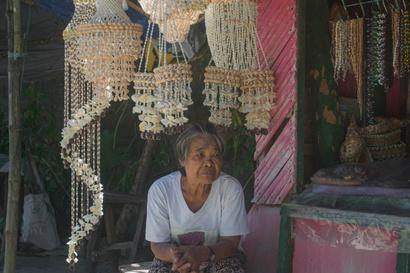
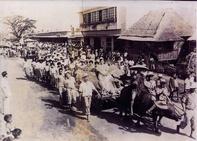
Town Fiesta June 613, 2022 Souvenir

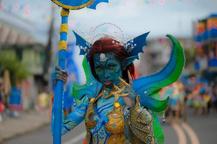
Program Magazine. Municipality of Gubat. June 6-13, 2022. Page 21.
Agoho Forest Reserve


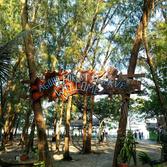
FB page

Blazing warriors FB page Gubat Heritage


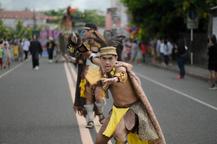
@259th Founding
Anniversary on June 13

 Photo taken from Sorsogon 101
Photo taken from Ian Photography
Phototakenfrom NewsInfoInquirer Net
Phototakenfrom images app
Photo taken from The best Marching Bands and Drum corps.
Phototakenfrom images app
Photo taken from Gubat Photographers Club
Photo taken by Clyde Esperanzate
Photo taken from Sorsogon 101
Photo taken from Ian Photography
Phototakenfrom NewsInfoInquirer Net
Phototakenfrom images app
Photo taken from The best Marching Bands and Drum corps.
Phototakenfrom images app
Photo taken from Gubat Photographers Club
Photo taken by Clyde Esperanzate

•GUBAT•











 Shot by: Clyde Esperanzate
Shot by: Clyde Esperanzate


 Shot by:
Ian Photography
Shot by:
Ian Photography


















 Photo taken from Sorsogon 101
Photo taken from Ian Photography
Phototakenfrom NewsInfoInquirer Net
Phototakenfrom images app
Photo taken from The best Marching Bands and Drum corps.
Phototakenfrom images app
Photo taken from Gubat Photographers Club
Photo taken by Clyde Esperanzate
Photo taken from Sorsogon 101
Photo taken from Ian Photography
Phototakenfrom NewsInfoInquirer Net
Phototakenfrom images app
Photo taken from The best Marching Bands and Drum corps.
Phototakenfrom images app
Photo taken from Gubat Photographers Club
Photo taken by Clyde Esperanzate